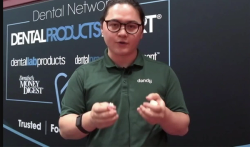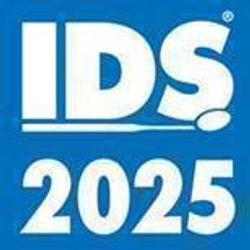- About Us
- Advertise
- Editorial
- Contact Us
- Terms and Conditions
- Privacy Policy
- Do Not Sell My Personal Information
© 2025 MJH Life Sciences™ and Dental Products Report. All rights reserved.
Casting a Shadow: How Small Labs Can Use Technology to Compete with the Big Guys
There are many technological tools available to small lab owners to boost their productivity to be on par with big labs.
For thousands of years, mankind has used technology to make life and work better. Harnessing fire, for instance, provides warmth, protection, and the ability to cook food. The wheel was first used for the creation of pottery, but was later adapted for transportation. Fast forward several thousand more years to the modern day and we see just how much technology touches our everyday lives, including the dental laboratory.
Dental labs can leverage technology to deliver efficiency, precision, and consistency. For smaller dental labs, it’s possible to produce the same sorts of restorations and services as bigger labs.
Doing more with less
While it may seem that smaller labs are being pushed out or gobbled up by the big labs, there is reason for optimism.
“We are entering an exciting time in the lab space, because I think the smaller labs are able to come into the industry with a fresh perspective, specifically all-digital labs,” Jesse Laizure, FullCountour Chief Commercial Officer says. “So, what you’re starting to see now is a lot of small labs starting to pop up where they have low head count, but a large scale. And what technology has allowed these labs to do is to compete, because they don’t have a large headcount, but they’re able to purchase a 3Shape digital scanner and accept intraoral scanning (IOS) cases, outsource the design, and then produce that at a great price for their doctors, with being able to scale their business with low costs.”
FullContour is a design service provider, started by Laizure, his father and brothers in 2011. In 2017, they entered a strategic partnership with 3Shape.
“We just design,” Laizure says. “Labs aggregate all their data. They send us the files. We design overnight and the files come back to the lab. The next day, everything is done, ready to mill or 3D-print.”
Dental labs of all sizes are already making use of technology to deliver the best restorations.
“As a trainer for Dentsply Sirona, I have helped advise and train many labs on their digital journey,” Owner of Spartan Dental Lab David Turpin says. “Within the last couple of years, most of the labs I’ve been to have some sort of technology in their lab prior to getting there, whether it’s just a scanner to design cases to send to a milling center to get produced, or they have the whole workflow. More recently, I have trained some new labs just starting out, and their first order of business was to invest in the inlabSW and scanner. At this point, having CAD/CAM in the lab is an industry standard, and makes sure the lab is current with the times to compete.”
“It’s no secret that the dental laboratory world was changing, prior to COVID-19,” Jesse Zamarripa, President of Opulent Digital Specialists says. “More dentists were purchasing CAD/CAM technology and they were kind of taking ownership of that workflow.”
That has continued to be the case as the industry has evolved, he says.
“When everything started going to China, eventually CAD/CAM came in and that kind of helped level the playing field, as far as operational costs, because it was cheaper for it to go to China than it was for you to make in-house,” Zamarripa says. “We’ve got mills now. So, you’re able to go ahead and battle against that. We see a lot of dentists and laboratories combining forces to open up their own labs. We also see laboratories elevating the level of their knowledge base. And there’s a lot of new technology out there that can help with this.”
Opulent Digital Specialists is a CAD/CAM distribution company servicing clients anywhere on the spectrum of their CAD/CAM needs.
“We can provide for our customers more of a concierge approach to service and support of CAD/CAM,” Zamarripa says. “Where we thrive is getting people from the entry level all the way up to advanced people getting the new equipment integrated to their laboratory.”
Tech that everyone should already use
Twenty years ago, smartphones were unheard of. Today, almost everyone has one. Such is the case with dental lab technology. The technology of yesterday, which was innovative and seemingly out of reach for most labs, is now an industry staple.
“Everyone should have a lab scanner,” Laizure says. “If you’re not doing that, I don’t know how you’re surviving. The technologies that most labs should already have, that they’re taking advantage of, are digital, the new digital workflows through lab scanning and CAD designing.”
When CAD/CAM came to dental labs, systems were “closed”. That is, cases had to be designed and produced on equipment made by the same manufacturer. Over the years, those systems have become “open” – meaning that cases can be designed on the equipment of 1 manufacturer and then produced on the equipment of another. There are pros and cons to both types of systems.
“They might’ve started off with a closed system, now they have an open system that can do all materials and products,” Zamarripa says. “Just having an open system that can communicate not only with their system, but whatever your doctors are out there are purchasing, as well. You need to have something to communicate going back and forth. And then I would also go back from leaning on automation. It’s kind of an arms race right now with a lot of laboratories moving up and building a service at the next level. With this technology, it’s really accelerated everything, and you’ve seen it as kind of a slow roll 10 years ago. Now, everybody has it and it’s who can get better and quicker.”
Labs may not be aware of some technologies that can help them compete, but there are existing tools and services that can help them improve their game. For instance, Laizure explains the advantages of 3Shape Automate.
“There are a lot of labs out there that don’t fully understand what 3Shape Automate is and how it can benefit them,” Laizure observes. “It is exclusively artificial intelligence (AI). It’s designing in the cloud. What this allows labs to do is lower their design costs, lower their production costs, and decrease their turnaround time, which is also important in the lab. It allows them to have more available units to nest in their puck to mill, which also can save on material costs. Their posterior units can be sent off and designed within 30 minutes and come back to the lab. Previously, it was sending your cases out to be designed and then they came back the next day. Well, what if I didn’t like my design now? You’re a day behind production. Maybe 2 days. Automate allows you to see your cases, all of them – whether it’s a hundred, a thousand units – it’s at scale.”
Technology enhancements and improvements also help the dental lab in terms of efficiency.
“In my lab, we utilize all CAD/CAM, from scanning all the way to milling and 3D printing,” Turpin says. “This has allowed us to produce more, because of the time savings and automation it brings to my lab. We use Carbon to print night guards and dentures. This has cut out several steps that are required when processing them traditionally. Our most recent investment has been in a new mill, Aidite’s AMD-500DC, which holds 12 pucks. With this we can continue milling all night, completely unattended. Walking into the lab in the morning and having several units completed is a great way to start the day.”
“I think it’s the workflow,” Laizure says of efficiency. “If I were to go start a laboratory right now, I would purchase a 3Shape lab scanner. I would purchase the dongle that allows me to accept all the IOS cases. I would outsource my designs to FullContour. I would outsource all my single unit posteriors to 3Shape Automate. And then, I would say workflow and support, like being able to support your doctors or clinicians. That white glove customer support is important.”
Non-dental tech
It’s easy to think of dental lab technology in terms of scanners, mills, and 3D printers, but there’s more technology that benefits the lab beyond those tools. On the business side of things, the use of a smartphone and other business tools can help the small practice appear, at least to customers, like they’re dealing with a large lab.
“Technology has really helped improve how I am able to conduct business, compared to how my great-grandfather and even grandfather were able to for so many years,” Turpin says. “Within the last few weeks, I have been introduced to keyboard shortcuts on my phone. They allow me to program my own shortcuts, consisting of letters and/or numbers, that signal my phone to attach the longer messages I want to send. For example, when I type, ‘DDenS’, this signals my phone to insert a much longer message containing information to the doctor that has texted me with a question about the steps of a digital denture. I’m able to spend less time typing out the answers that my clients are requesting, while providing instant answers for continued quality customer service.
“Another technology that has really helped me provide customer service more efficiently, although not necessarily new, is Voice Over IP phone system,” he continues. “It allows me to call doctors from my cell phone, but have it appear as though I am calling them from the lab. On the flip side, my team at the lab can transfer calls directly to my cell phone when a doctor calls for me. They would never guess that sometimes I’m not at the lab when I’m talking to them. It has really helped me streamline communication with my clients. Communication with my team is also very important. My team has also integrated Google Workplace into our daily business routines. This is where we hold important documents so that we never go without, especially when I’m on the road. We can hold video meetings or use it to send messages back and forth to get quick answers.”
For early man, fire and the wheel were just as a magical as the high-tech tools of today are to us, and that is certainly the case for dental laboratories. While those formerly futuristic technologies are somewhat commonplace now, Zamarripa reminds labs that the trend is only going to continue.
“Some of that technology was more sci-fi,” Zamarripa says. “Well, nowadays it’s a reality. We have all these tools, and dental technicians really thrive when they embrace these tools to help elevate the dentist, themselves, and the overall product that they’re producing. We have all these new tools, and dental technicians have the knowledge, but what else could new technology help with a laboratory – especially a production laboratory? There’s a new generation of milling machines, where more production units can be produced. They are fully automated and can go from wet to dry milling. You can go from milling a titanium bar or a blank or eMax to a dry mill, where you’re milling zirconia. And when you can have a fully automated production unit, your laboratory goes from working eight hours to working 24 hours. And that really does increase the productivity and helps with your costs. You’re able to serve your customer along with the the higher level technology better than you ever have before to past.”



